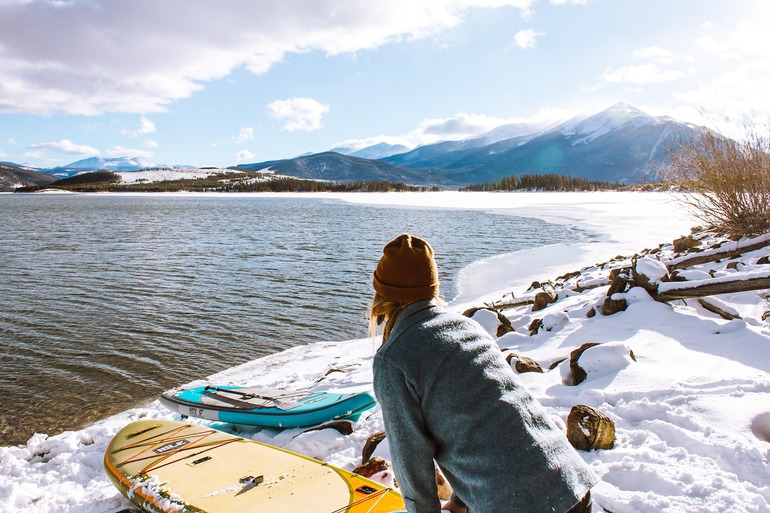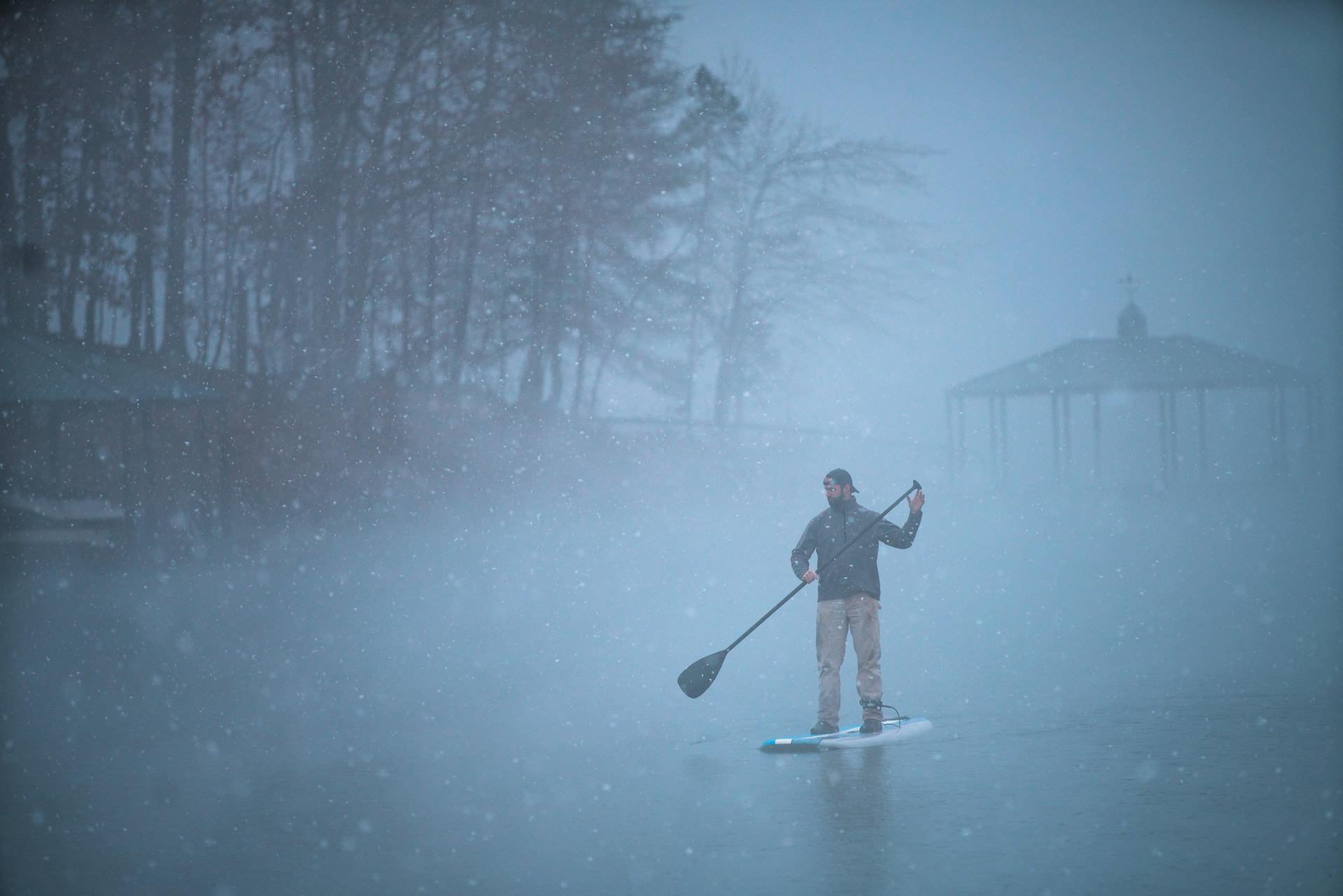Stand-up Paddling during winter?

Stand-up paddling (SUP) is an interesting sport that has countless variations: touring, white water paddling on river rapids, surfing on big waves, distance and speed racing. Most people associate stand-up paddling and other water sports with warm summer months, but we are here to show you that this sport has also its winter side!
Winter at sea is special because there are no crowds, tourists, speedboats, noise or loud music from the hotel terraces. The sea is the clearest and during days without wind, also the calmest. There is no boring mistral wind or unbearable summer heat. All of this makes an ideal opportunity for spending time on the sea, with just a board and a paddle being (almost) all you need for that.
Is it possible to enjoy SUP without getting wet? With a touch of good organization, of course it is! During winter it’s especially important to have a good plan, adequate equipment and clothing. The rules for paddling in winter are the same as for other winter sports that include the risk of hypothermia, such as alpine hiking or touring skiing. The Adriatic Sea is not so cold and the temperature is currently from 10 to as much as 14 degrees Celsius in the south Adriatic, but you should still be careful and take fewer risks compared to summer time.

RULES FOR WINTER SUP-ING:
- Wear special winter paddling clothes. It should be taken into account that stand-up paddling is a cardio activity, so you will soon become warmer as you paddle. If you decide to try avoiding falling in water or getting wet and you are going paddling when the sea is calm, it is most comfortable to wear layered clothes that you would otherwise wear for trekking in cold weather. That could mean: warm leggings and a sweatshirt, few layers of quick-drying or thermal T-shirts, a windstopper jacket and a beanie. It is best to have thermal neoprene boots on your feet and, if necessary, gloves with grips. If you are planning for a longer trip, we advise you to take spare clothes with you in a waterproof bag because if for any reason you end up in the sea, you would have to paddle back wet which can quickly lead to hypothermia. You can also buy special waterproof dry suits for paddling, which are best for very cold conditions. Suits made of neoprene or thick lycra are also a good solution, but we advise on buying those specially designed for paddling so that they don’t restrict movement.
- Just before departure, be sure to check the weather forecast for the next few hours so that you are not surprised by sudden wind changes or storms.
- Stay close to the shore. The golden rule says that you may move as far away from the shore as you can endure swimming back to it. Be sure to also consider the fact that it is harder to swim in cold water and with soaked clothes.
- If you are not an experienced paddler, don’t go to the sea alone. If you really don't have company, feel free to contact us because we are always up for action. In any case, it is good to take your mobile phone with you in a waterproof bag.
- We suggest finding a place where you can climb on the board without getting your feet wet. If your feet stay dry, you will be much more comfortable paddling.
- It’s always good to have a SUP leash. Most people think that in calm waters you don’t need a leash that ties the board to your ankle, but if you want to pay maximum attention to safety you should get that too. In case of falling in water, it will be much easier to return to your board.
- As with other winter sports, prepare warm spare clothing and footwear and leave it on the beach or in the car. It is also good to prepare a thermos with a warm drink and some snacks.
- If you have more than one board to choose from, for winter paddling take a wider and more stable board. Leave your race boards for warmer weather, unless you are well trained (if you are, great - go for it!). Remember that for the purpose of training it’s even better to train on a slow board, because you will have to put in more effort to reach a certain speed.
DO NOT:
- Choose winter for your first attempt at stand-up paddling. When mastering the technique of stand-up paddling, the biggest challenge is the psychological barrier and the belief that water is an unstable medium on which it is difficult to stand. When you add the fear of getting cold and wet, it gets even harder to relax.
- Overestimate your options. Don’t take your narrowest and fastest board or choose the longest tour/trip without good preparation. Don’t copy what someone else is doing. We are all different and have different abilities. You need to know your limits and possibilities well and plan the paddling accordingly.
- Train on the waves without a neoprene/dry suit or even a life jacket if it doesn’t interfere with your freedom of movement. The cold sea can overcome even an experienced swimmer, especially if dragged down by wet clothes.
A few words for the end
No matter the season, staying in nature and breathing the fresh air has multiple benefits for our psychophysical health. Winter, unlike summer, somehow makes us lazy and keeps us in houses (especially this winter) but remember that all it takes is to resist it only once and nothing will be able to keep you inside anymore. We are lucky to live in beautiful Istria with our SUP centres located on the south, at its very tip. All the beauties of our coastline, our islands, rocks and bays are at our fingertips.
It would be a sin not to take advantage of that. In summer or/and winter.
You might be interested in our SUP guided tours in warmer months of the year













